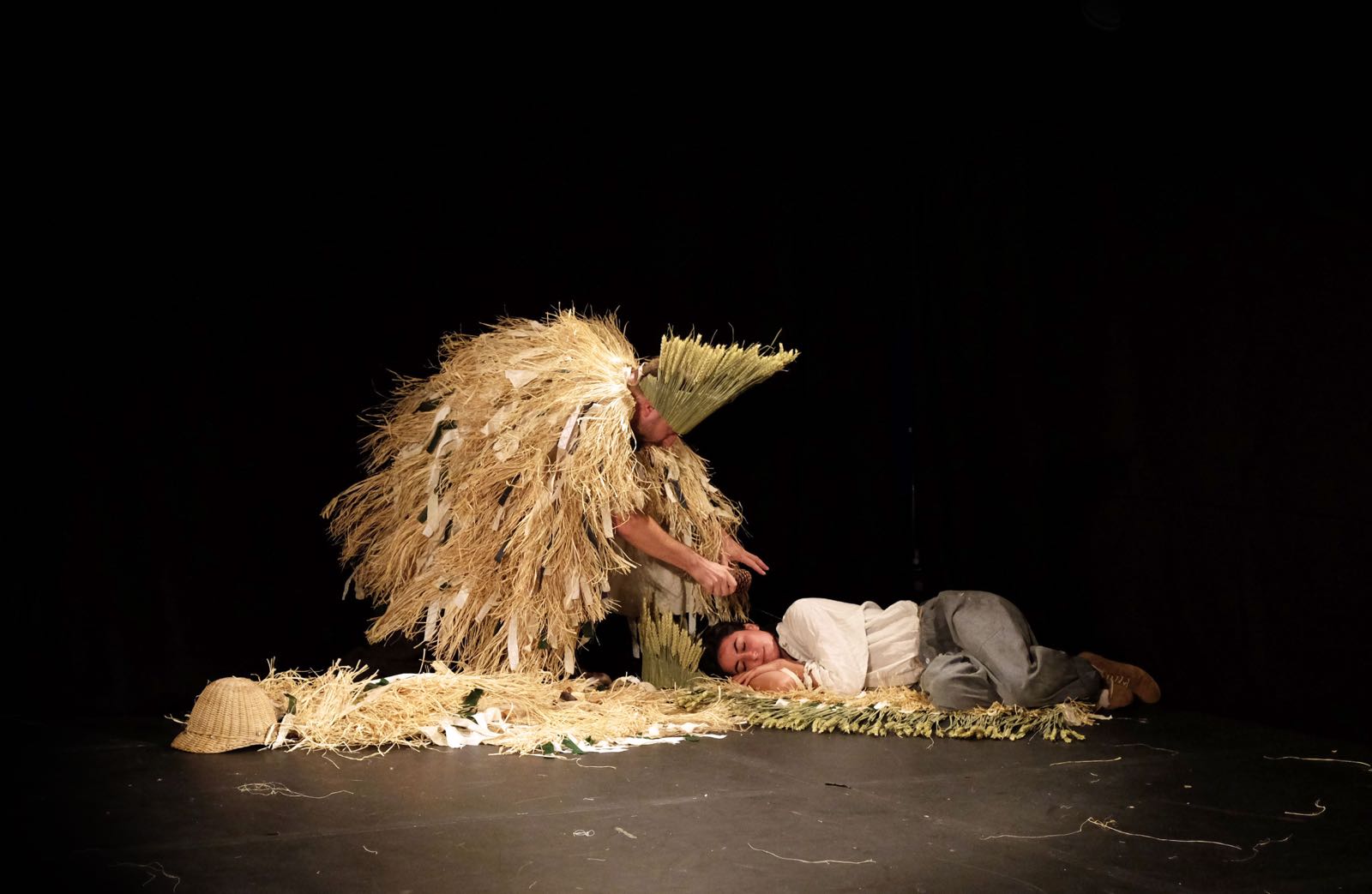A Midsummer Night’s DROLL both is and isn’t a Shakespeare play. It is based on the 1661 play The Merry Conceited Humours of Bottom the Weaver, which is in turn based on A Midsummer Night’s Dream, first performed at the end of the 16th century. The company behind A Midsummer Night’s DROLL, The Owle Schreame claim that theirs is the first production of this adaptation in centuries.
The main plot is similar to the original: Fairy queen Titania is tricked into falling in love with Bottom the weaver, whose head has been transformed into that of a donkey. There’s also a play-within-the-play concerning the doomed romance of Pyramus and Thisbe. The cast of five play numerous roles, with some help from audience members. There is music and dancing throughout, creating a riotous, carnivalesque atmosphere. Director and producer Brice Stratford stands out in his deliberately histrionic performance as Bottom. Laura Romer-Ormiston and Amélie Rousseau also deserve commendation for the excellent costumes and props used in the play, utilising straw to cultivate a cheap aesthetic.
The production is supposedly improvised, but it’s clear how much time and effort has gone into making A Midsummer Night’s DROLL the success it is, right down to the puppets made from gourds.
The Pyramus and Thisbe subplot is less interesting than the bonkers main narrative, and Stratford is at times a bit too lecturing in his explanation of the relevance and importance of the Droll plays. Fans of Shakespeare might prefer the standard version of the Bard’s dream-like comedy, but where A Midsummer Night’s DROLL succeeds is in offering a whole new perspective on theatre in the early modern period. It’s very silly, very loud and a lot of fun.
